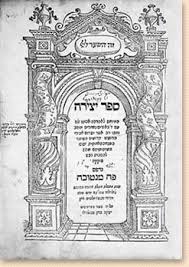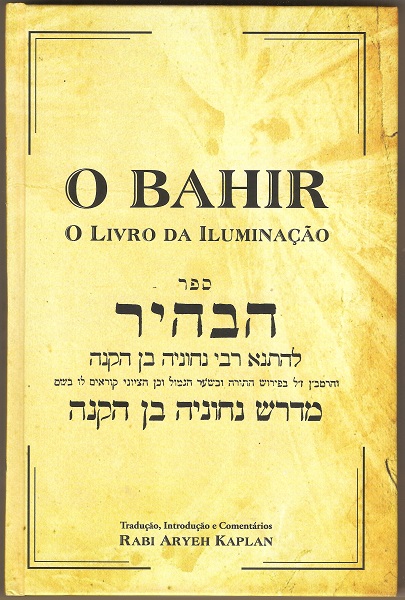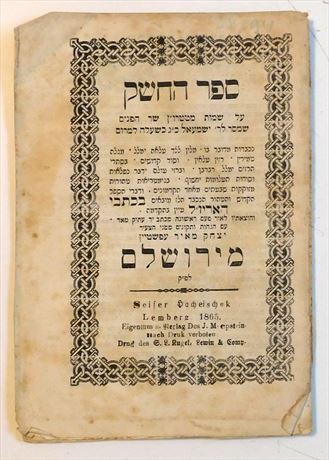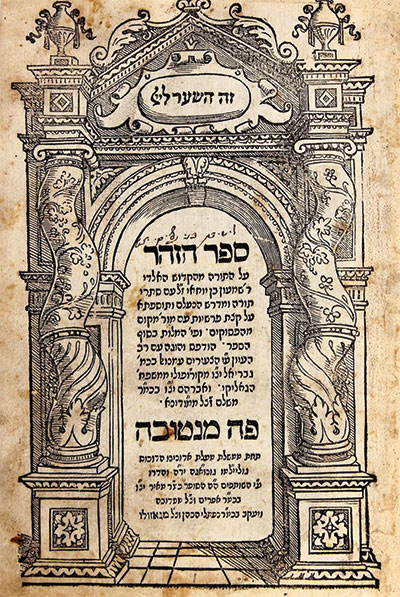WELCOME TO OUR KABBALAH LIBRARY
The primary texts of Kabbalah were allegedly once part of an ongoing oral tradition.
The written texts are obscure and difficult for readers who are unfamiliar with
Jewish spirituality which assumes extensive knowledge of the
Tanakh (Hebrew Bible), Midrash (Jewish hermeneutic tradition) and halakha (Jewish religious law).

Introduction to our library
Jewish forms of esotericism existed over 2,000 years ago. Ben Sira warns against it, saying: "You shall have no business with secret things". Nonetheless, mystical studies were undertaken and resulted in mystical literature. The first to appear within Judaism was the Apocalyptic literature of the second and first pre-Christian centuries and which contained elements that carried over to later Kabbalah. According to Josephus, such writings were in the possession of the Essenes and were jealously guarded by them against disclosure, for which they claimed a certain antiquity . In our library you will have access to the original Kabbalah texts that are said to be the PRIMARY TEXTS.
 |
|
SEFER YETZIRAH
In the medieval era Jewish mysticism developed under the influence of the word-number esoteric text Sefer Yetzirah. Jewish sources attribute the book to the patriarch Abraham, though the text itself offers no claim as to authorship. This book, and especially its embryonic concept of the Sefirot, became the object of systematic study of several mystical brotherhoods which eventually came to be called baale ha-kabbalah (בעלי הקבלה "possessors or masters of the Kabbalah"). |
|
 |
| |
|
|
|
|
 |
|
BAHIR
Bahir (בהיר) ("Illumination"), also known as Midrash of Rabbi Nehunya ben Ha-Kana - a book of special interest to students of Kabbalah because it serves as a kind of epitome that surveys the essential concepts of the subsequent literature of Kabbalah. It is about 12,000 words (about the size of a magazine). Despite its name "Illumination", it is notoriously cryptic and difficult to understand (but not impossible). Much of it is written in parables, one after the other.
|
|
 |
| |
|
|
|
|
 |
|
SEFER HA-HESHEQ
Sefer ha-ḥesheq (Hebrew: ספר חחשק "Book of Delight"), a kabbalistic treatise dealing with the Divine names and their efficacy in mystical practices. Passed down by Abraham Abulafia, the information distinguishes between the various methods of kabbalistic transmission to later generations. Abulafia opposes the method he received to the Talmudic and theosophical Sefirotic methods.
|
|
 |
| |
|
|
|
|
 |
|
THE ZOHAR
Zohar (זהר) ("Splendor") – the most important text of Kabbalah, at times achieving even canonical status as part of Oral Torah. It is a mystical commentary on the Torah, written in medieval Aramaic
|
|
 |
| |
|
|
|
|
 |
|
ETZ HAYIM
Etz Hayim (in Hebrew: עץ חיים) ("Tree [of] Life") is a text of the teachings of Isaac Luria collected by his disciple Chaim Vital. It is the primary interpretation and synthesis of Lurianic Kabbalah. It was first published in Safed in the 16th century. It consists of the primary introduction to the remainder of the Lurianic system. The Shemona She'arim (eight gates): is the full Lurianic system as arranged by Shmuel Vital, the son of Haim Vital. Eitz Hayim is the only work published within Hayim Vital's lifetime, the rest of his writings were buried with him in an unedited form.
|
|
 |
| |
|
|
|
|
 |
|
PARDES RIMONIM
Pardes Rimonim (in Hebrew: פרדס רימונים) (Garden [of] Pomegranates) – the magnum opus of Rabbi Moshe Cordovero (1522–1570), published in the 16th century. It is the main source of Cordoverian Kabbalah, a comprehensive interpretation of the Zohar and a friendly rival of the Lurianic interpretation.
|
|
 |









